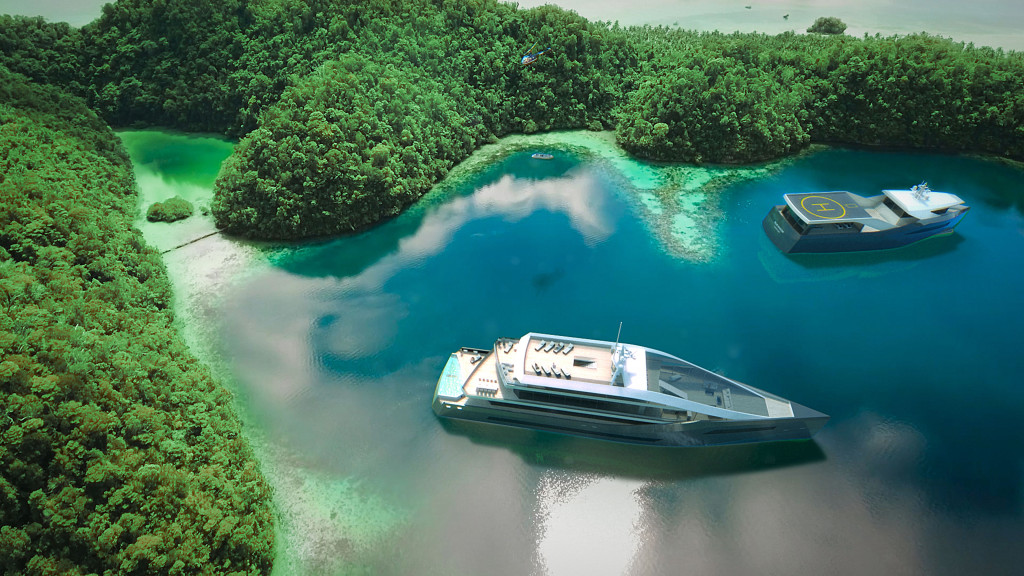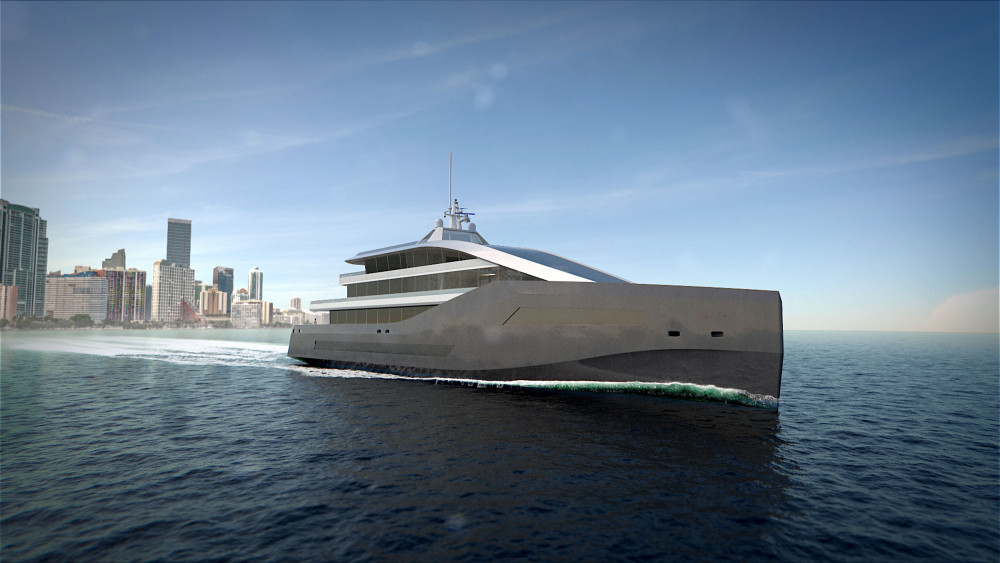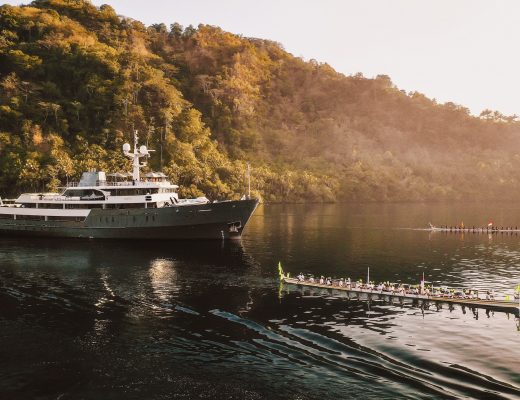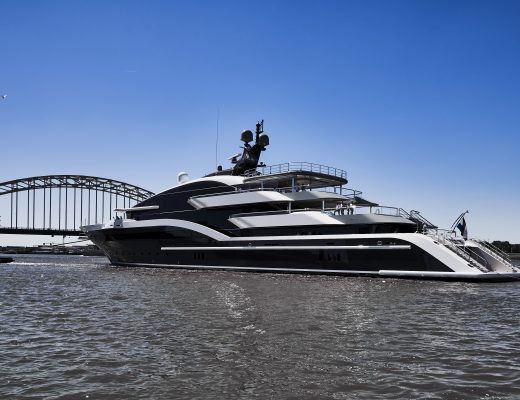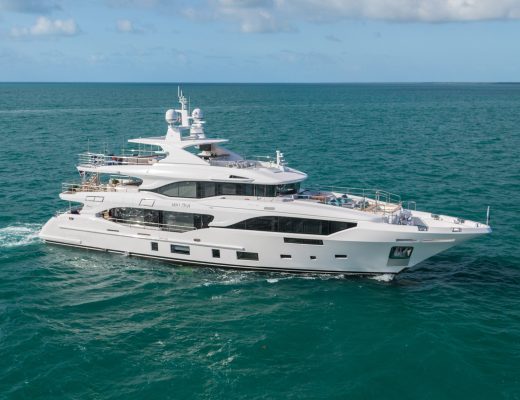Just recently unveiling a new groundbreaking luxury yacht concept dubbed Crystal Blue, Rolls Royce has proven their unrivaled craftsmanship and ingenuity yet again by equipping the ship with advanced intelligence solutions and hybrid propulsion that’s based on LNG fuel and battery power.
First introduced during the Global Superyacht Forum (GSF) in Amsterdam, Rolls Royce adopted the 62-metre Crystal Blue yacht and it’s 42-metre attendant support vessel Blue Shadow for fresh ideas on yacht design and propulsion by improving the yacht’s super structure, resulting in more room for guests to use in even greater comfort.
At the time of the GSF event, when the concept’s development was announced in a keynote speech, Oskar Levander, Rolls-Royce SVP Concepts and Innovation said: “Crystal Blue has been designed specifically to show how new technology can meet the yacht sector’s increased demand for higher performance, greater operating ranges and increased levels of guest comfort, without impacting the environment.”
The Rolls-Royce Blue Ocean team integrated a couple of novel safety features into the design, i.e. a ‘safe room’, which would serve as the ship’s stronghold for guests and crew to take shelter at in the case of an unauthorized boarding. Once inside the safe room, the crew can override the controls and operate the yacht either remotely or guided via a shore-based centre to pilot the vessel.
Another unique novel feature of the vessel is the use of an intelligent dynamic positioning system that allows for automatic control towards the twin azimuthing thrusters and a TT1100 bow thruster. This addition piece of technology on the ship is customarily only seen on offshore support vessels, in which it maintains a close proximity of just a few meters to oil rigs. However, when this technology is applied on board Crystal Blue the yacht can become completely still in the water – without the use of an anchor – which allows the yacht to follow the sun transversely through the sky thereby granting sunbathers the “optimum tanning angle” while lounging on deck.
Levander adds, “our ship intelligence and remote-control concepts have allowed us to design a yacht for the future that has the bridge located below the bow, inside the vessel. The crew is able to monitor and control the vessel using sophisticated sensors, cameras, display screens and situational awareness technologies; but an internal bridge frees up the traditional area of the bridge in the forward part of the superstructure to let owners and guests enjoy a panoramic vista that is traditionally only enjoyed by the crew.”
Crystal Blue’s bridge console utilizes Rolls Royce’s Unified Bridge design, which has been delivered to a number of ship types including large super-yachts. Accommodating up to 12+ passengers and a crew of 12, Crystal Blue is based on a composite or aluminum hull operating a power plant that garnered inspiration from the Rolls-Royce hybrid LNG/Battery SAVe-CUBE system configuration. Thanks to the twin LNG-fuelled 16V4000 MTU M65-N generator and the two low-weight carbon Azipull thrusters that provide propulsive power, the vessel achieves a maximum service speeds of 20 knots.
“We have dimensioned Crystal Blue fuel tanks for a range of 3000 nautical miles without refuelling but with the Shadow’s additional fuel capacity, the range increases to 4400 nautical miles, meaning that most of the typical yachting areas are accessible.”
The yacht’s steel-hulled support vessel, Blue Shadow, can be remote-controlled and used for transporting as well as launching the mother ship’s tender or helicopter. This also helps designers make better use of the aft area of Crystal Blue for guests, offering possibilities such as an infinity pool, or a beach area to the yacht’s layout. In addition, Blue Shadow doubles up as the owner’s personal LNG bunkering barge.
For more information visit: Rolls-Royce.com/marine

